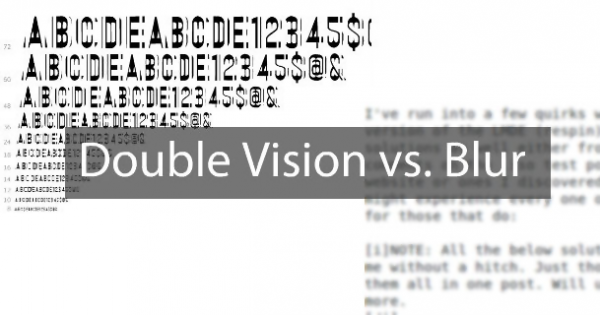Guide:Resolving double vision
Help! I'm seeing double! Actually, double vision is a good sign your vision is improving and is a normal step between blur and clarity, especially at lower diopters.
What's happening
The eyes are designed to optimize vision, adapting based on environmental feedback.[1] This is a normal thing that the eyes do from early childhood.[citation needed] The eyeball changes shape and size to optimize the focal plane while the visual cortex interprets the signal.[citation needed] Returning from lens-induced myopia involves a drastic change to the focal plane, even when it is carried out over a long period of time; the change is larger than anything the visual cortex would have encountered in nature, without lenses.
The change to the size and shape of the eyeball, in response to blur, happens relatively quickly. The double vision is a lag-period where the visual cortex is learning to interpret the changed signal it is receiving; it is learning to "align" the images.
Because the changes to the eye and the brain don't occur at the same pace progression of visual perception is generally experienced as:
Blur > Double Vision > Clarity
Sometimes double vision is difficult to resolve and the visual perception may cycle between double vision and clarity a few times over weeks or months before coming to rest at clarity, especially at lower diopters.
TODO: Add reference to https://endmyopia.org/pro-topic-double-vision-ruining-your-life/
Fusing the images
When to reduce?
References
- ↑ Wallman J, Winawer J (2004). "Homeostasis of eye growth and the question of myopia". Neuron. 43 (4): 447–68. doi:10.1016/j.neuron.2004.08.008. PMID 15312645.Page Module:Citation/CS1/styles.css has no content.
